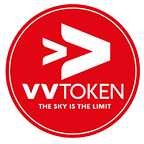Block chain is a digital distributed database programmed to record growing list of transactions. It is highly guarded against illegal penetration.
History of Blockchain
The birth of the first distributed digital ledger dates back to 2008 by an unknown scientist Satoshi Nakamoto. It was released as a vital component of the white paper; Bitcoin, and later, in the twilight of 2009 released as an open source software. In this paper, he argued that he had solved the issue of double-spend for digital currency via a distributed database that combined cryptography, game theory, and computer science.
Satoshi’s Blockchain design was fashioned in a way to permit transactions between two entities or individuals without the interference of a third party. Through the use of a peer-to-peer network and a distributed time stamping server, a Blockchain database is managed autonomously.
In Satoshi’s white paper publication, the words block and chain were used separately. It was used this way since 2008 until 2016 when the two words were merged together hence, the name Blockchain. The functionality of the software has been improving in the recent years. This is signaled by the regular increase in size. The file size of Bitcoin increased to 20 gigabytes in 2014.
In 2015, the file size had increased approximately to 30 gigabytes. Its size increased to a landmark size between 2016 and 2017. In 2016 it grew from 30 gigabytes and rose up to 100 gigabytes in 2017. This change in eventuality goes further to buttress the advancement Blockchain has undergone since its inception.
How Blockchain Works
To understand how the Blockchain function, we should, first of all, know what a Bitcoin is. Bitcoin is a form of digital or electronic currency. It is also known as a cryptocurrency. It is not printable like physical currencies. It is created by mathematical computations regulated by miners. Bitcoin is ‘mined’, using computing power in a distributed network.
They are used to carry out transactions. They contain their own value. A Bitcoin can be used anywhere to make a purchase or pay a bill. It can be kept away, unused while its value appreciates. It has same functions as that of a normal currency except that it is decentralized- it cannot be controlled by anybody or institution. Unlike conventional banks, it is easy to set up. Bitcoin creation can be done in a matter of seconds.
Bitcoin is stored in digital wallets. These wallets can be found on the user’s PC or in a storage cloud. A Wallet is some sort of virtual bank that allows users to save, send and receive Bitcoin.
With these said we can now look at how Blockchain work. Blockchain is a form of a ledger that keeps a record of all transactions using Bitcoin that has been occurring. The official blockchain public site permits any entity to perform these transactions in real time and evaluate the basic stats of the system, such as mining costs of Bitcoin, the cost per transaction using Bitcoin and even the electricity used to mine Bitcoin.
This form of technology forms a platform where two unfamiliar bodies converge to perform a transaction minimizing any form of uncertainty occurring. Blockchain is used to track transactions using the cryptocurrency, Bitcoin. It allows users to verify and audit transactions seamlessly with no costs attached. Blockchain using the analogy of a conventional banking system is like a bank statement.
The Blockchain database is shared by all nodes participating in a system. These nodes are where the ledger files are stored across different networks of private computer work. The ledger is secured by a cryptography that makes it impregnable. When a new transaction is made, the blockchain is validated across the distributed network, before including the transaction as the next block on the chain.
There you have it! This is what Blockchain is all about. Alongside is also it uses and how it works.
